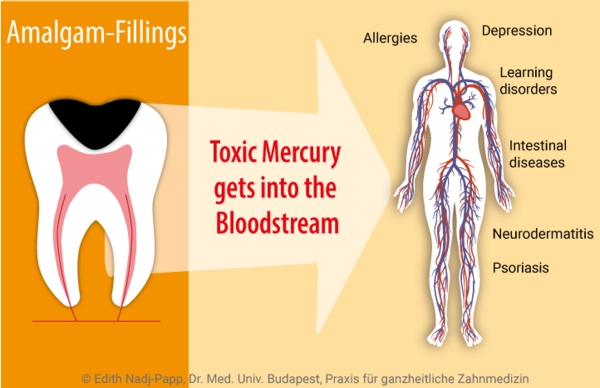Environmental Dentistry
Environmental dentistry is a comprehensive, cross-disciplinary specialisation based on scientific insights which investigates the interrelations between oral health and the rest of the body, which is especially relevant for chronic illnesses, which are often induced by allergies, intolerances and toxications from metal and synthetic fillings, prostheses, crowns and bridges.
Our practice is one of the first in Germany which has acquired the necessary expertise through certified and specialised training.
40% of Germans suffer from allergies, continuous immune deficiency, tinnitus, or other chronic illnesses induced from environmental factors. Unfortunately, there are no materials today which are biocompatible with every patient at every point in time, except for ceramic.
It is crucial to look out for symptoms indicating an excess of toxins the body, which include but are not limited to auto-immune diseases, muscle aches and periodontitis.
Many reactions are induced through metals resulting in local or systemic inflammations and immune deficiencies. Additionally, the amount of people sensitive towards synthetic materials is increasing steadily as well.
Diagnosis in environmental dentistry
While conventional medicine limits itself to one form of testing for allergies, usually a patch test, this form isn’t always the most optimal regarding dentistry. Environmental medicine offers a much wider array of options, such as the MELISA-Test or basophilic stippling. It is always suggested to do an environmental diagnosis, regardless if the issue about oral pain, or if there have been any dental restorations.
In environmental dentistry, we cover three main areas:
- We avoid stressors (we only use materials to which you respond well)
- We minimise stressors (we remove materials you don’t tolerate)
- We strengthen the immune system (through a change in diet, lifestyle, bowel rehabilitation, natural therapies and orthomolecular medicine
How we handle amalgam fillings
We guarantee an appropriate removal of the metals with a rubber dam, an amalgam drill, a clean-up vacuum, an amalgam face-mask and continuous inflow of oxygen.
We only use high quality materials and are experienced regarding the tolerance of these. This results in the risk of negative reactions against the materials to be reduced to a minimum, as there are plenty of methods to gauge whether or not a reaction is likely.

